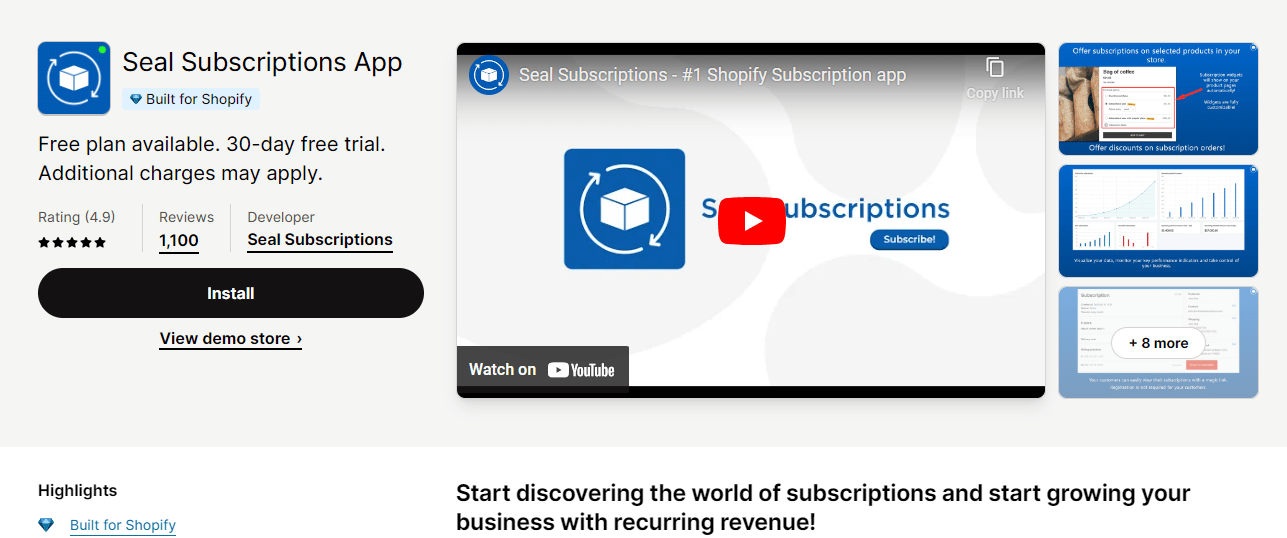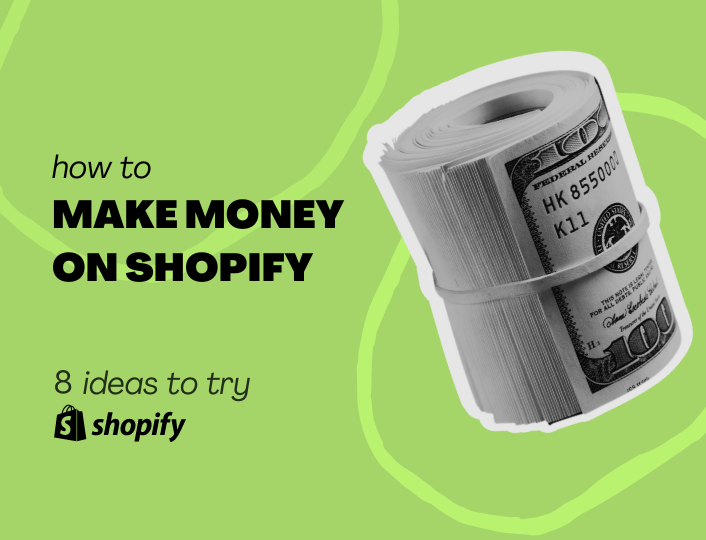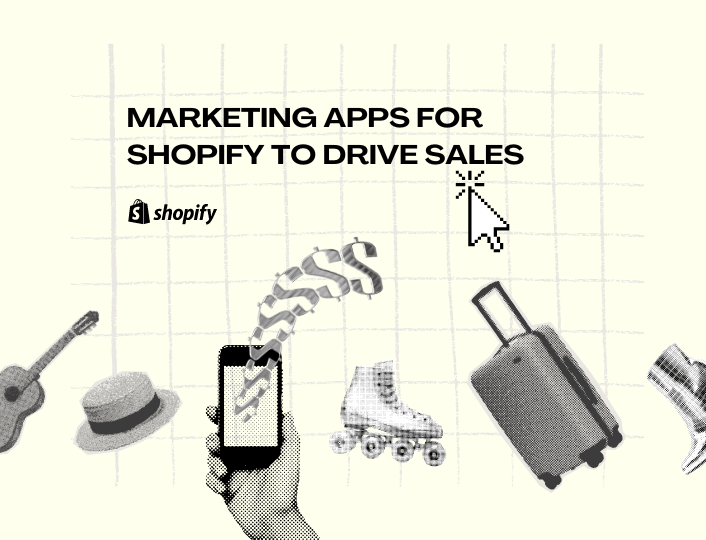The subscription economy is one of the fastest-growing business models in today’s world. Social platforms like YouTube, Facebook, and Instagram utilize subscription models. On these models, a person subscribes to the channel, dubbed a subscriber, receives first-hand information and prompt notifications of new content.


The same applies to the eCommerce industry. Shopify businesses use subscription models to offer recurring services to their loyal customers and build a community of followers who share the same values as your brand.
In this guide, you’ll learn the benefits of subscriptions and how to utilize them in your Shopify store.
Why do you need a Subscription Model in Your Shopify Store?
Suppose the BigHeart brand on Shopify that sells gummy vitamins, organic supplements and other healthy living products observes customers buying certain supplements every month for the last 6 months to 1 year. They initiate orders, the brand processes them and ships the products to them, repeat and rinse!
Instead of manually requesting orders, he creates subscription plans based on frequently bought products to automate the process. Here, the customers subscribe to get these products at a discounted price on a monthly or yearly basis.
This subscription model is crucial for business growth as it creates a steady and predictable income stream while fostering long-term relationships with your customers.
Benefits of Subscription-Based Model in Shopify
Let’s look at some of the benefits of the subscription business model
1. Predictable Revenue
Subscription provides a steady and predictable stream of income for businesses. Unlike one-time sales, subscription models generate recurring revenue, allowing companies to forecast their earnings more accurately and plan for future growth.
2. Enhanced Customer Relationship
Subscriptions foster long-term relationships with customers. By providing ongoing value and personalized experiences, companies build stronger connections with their subscribers, leading to increased loyalty and reduced churn rates.
3. Lower Customer Acquisition
Subscription services save you the cost of acquiring new customers—which can be expensive. With this model, once a customer is acquired, the focus shifts to retaining and upselling to existing subscribers rather than constantly seeking new buyers, potentially reducing customer acquisition costs over time.
4. Increased Customer Lifetime Value (CLV)
Subscriptions can significantly boost the CLV as customers tend to stay with a service or product for an extended period. By consistently delivering value, companies can increase the overall revenue generated from each customer over time.
5. Data-driven Insights
Subscriptions generate valuable data on customer behaviour, preferences, and usage patterns. Leveraging this data enables businesses to make informed decisions regarding product improvements, marketing strategies and customisation, leading to better-tailored offerings.
Setting Up Subscription Models in Your Shopify Store
The first step to setting up Shopify subscription is to choose the right model for your business.
Choose the right Subscription Model
The first step is to choose the right subscription model that aligns with your business goal as a Shopify seller.
There are three common subscription models to choose from; curation, replenishment and access. Each comes with its pros and cons, so it’s best to research and identify the best fit for your business.
- Curation Subscription – This model is considered the most popular subscription model with 55% subscribers. Here, you can select a group of products within or across product categories based on customer preferences and interests. While being the most common, this model has a lower conversion rate stated at 51%.
For example, the BigHeart brand can combine different vitamins and supplements in a subscription box for its customers to buy at discounted prices.
- Replenishment Subscription – This model offers the same product consistently. It focuses on providing customers with regular deliveries of products. It is mostly used for items that are repeatedly purchased within a month. Although this model has a lower percentage of subscribers at 32%, it has a higher conversion rate stated at 65%.
With this model, you can create subscription boxes of consistent products. A good application would be to create a subscription box for your customer who purchases two work dresses every month. That way, they can quickly scan through the different custom dress boxes and complete their purchase. This is also referred to as “subscribe and save” model.
- Access Subscription – This model provides access to a service or membership. It is the lowest among the three with a 13% subscriber rate and the lowest conversion rate at 51%.
Using the BigHeart Brand, they send detailed meat and diet plans to customers on their membership plan.
Choose the Right Subscription App
Choosing the right subscription app simplifies your planning process. Choose apps that are compatible with your store from the Shopify App Store.
One such app is Seal Subscriptions, the right pick for the smoothest, easiest subscription configuring. Seal Subscriptions offer you full control over all features – products, discounts, churn rate, subscription boxes, and more.


With over 1000 reviews 5-start reviews on Shopify, the Seal Subscriptions app matches Shopify’s highest quality standards for speed and merchant value. You can access the latest themes on this app directly from your Shopify admin page.
With round-the-clock access to customer support, you can work your way around offering tiered discounts, custom shipping offers, rewarding buyers’ loyalty, and creating specialized subscription links.
Users commend Seal Subscriptions 24/7 customer support, the intuitive interface and dashboard, and the ease of setting it up on your Shopify store.
Seal Subscriptions integrates with Klaviyo and Google Analytics for all your marketing and analytics needs. You can also connect it to PayPal for swift payment. Seal Subscription offers a free version for store owners looking to manage under 150 customer subscriptions. Paid plans begin at $4.95 per month for up to 750 subscriptions.
Managing Your Subscription
After the subscription app is set up and installed, the next is to manage your subscription. This involves searching for upcoming orders or payment information. Sort your customers from the subscription status filter to find active, paused and expired subscriptions.
You can manage your orders, update subscription information and manage scheduled fulfillment in your Shopify admin. Ensure your Shopify store supports regular purchases.
When setting up pricing for your subscription offers, factor in production costs, market trends, perceived value and competitive pricing. Don’t underprice your models in a bid to retain customers. A subscription model should ease the buying-selling experience for both parties and boost profit margins, not incur losses.
Set Up Your Subscription Emails
Emails are one effective way to communicate with your customers. Creating an automated email for your subscription-based model is crucial.
Use email to send personalized messages about new offers, updated plans and other events that can benefit your customers. Also, you can use exit-intent email popups to grow your subscribers and convert new customers to paying customers.
Conclusion
The subscription-based model is a fast-growing area of eCommerce that needs to be explored for brand growth. Use these listed steps to start your subscription model in your Shopify store to boost sales, increase conversion rate and build a community of loyal customers.




